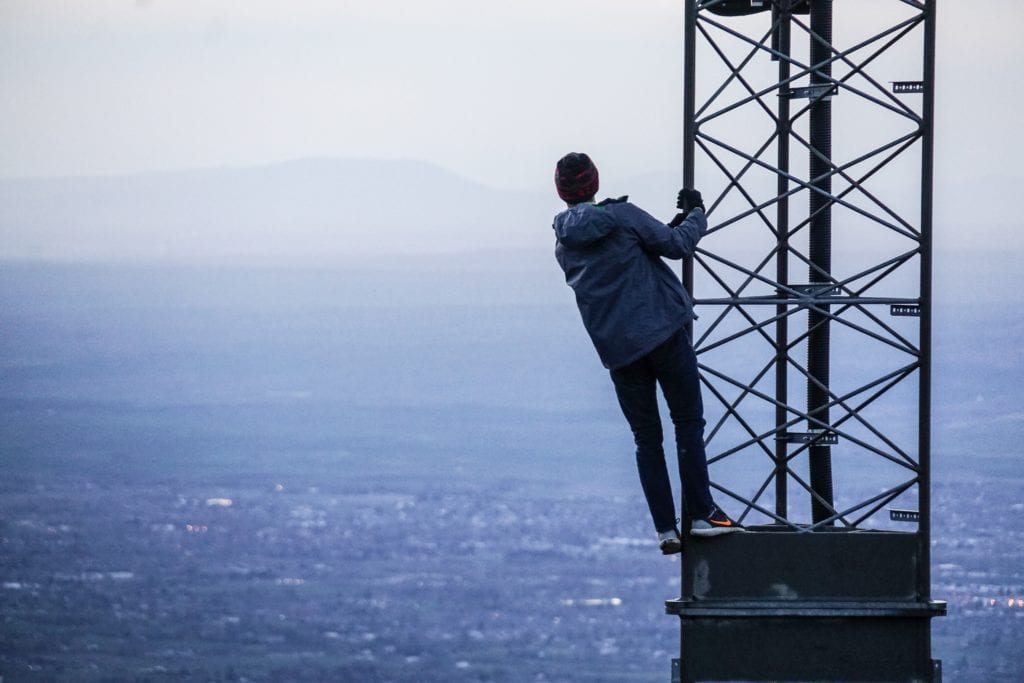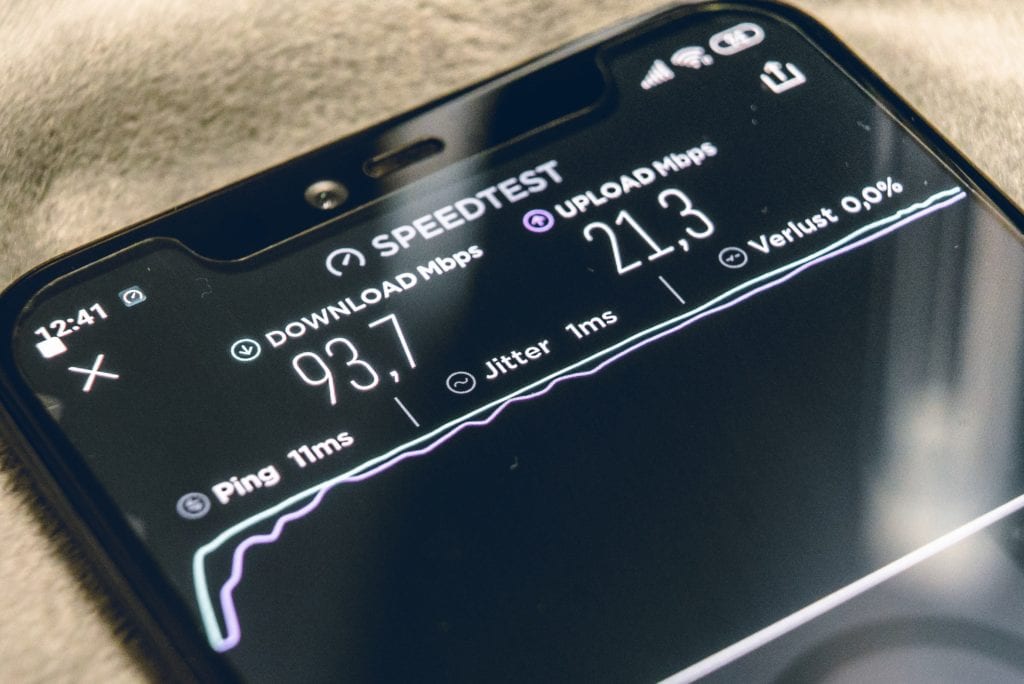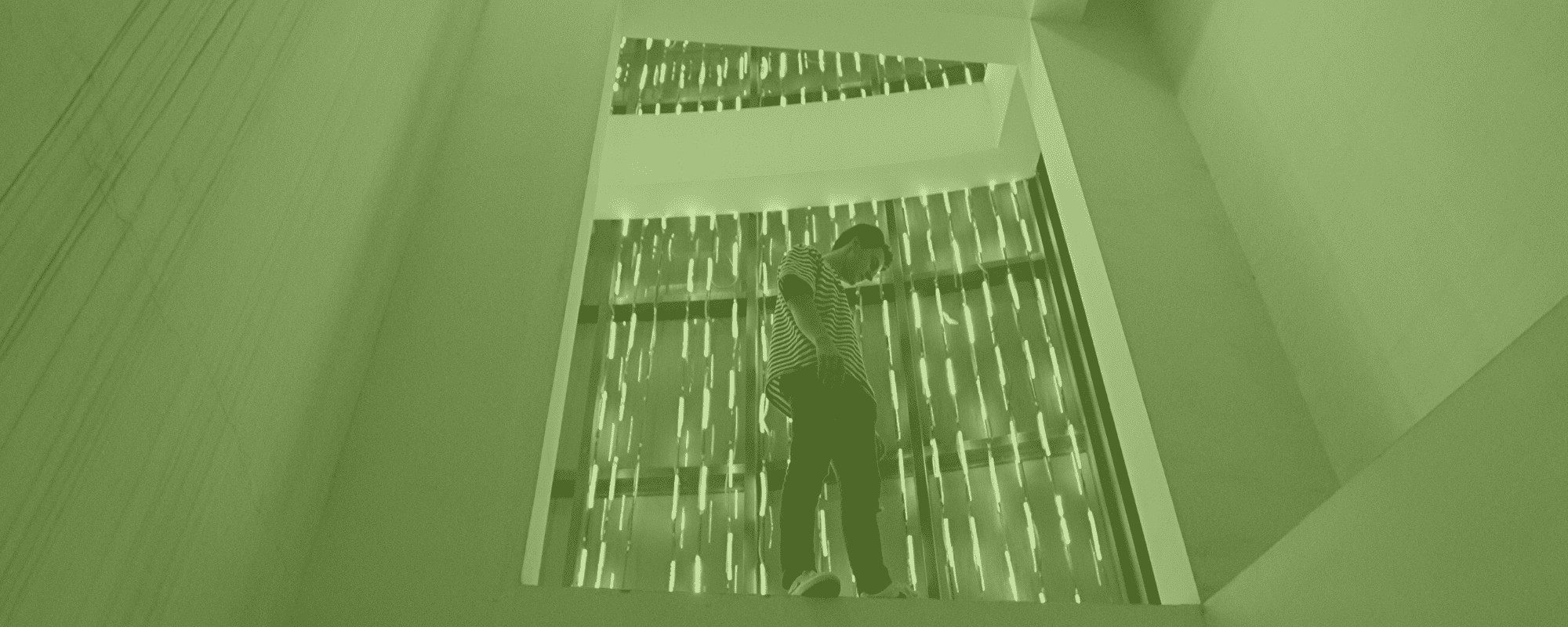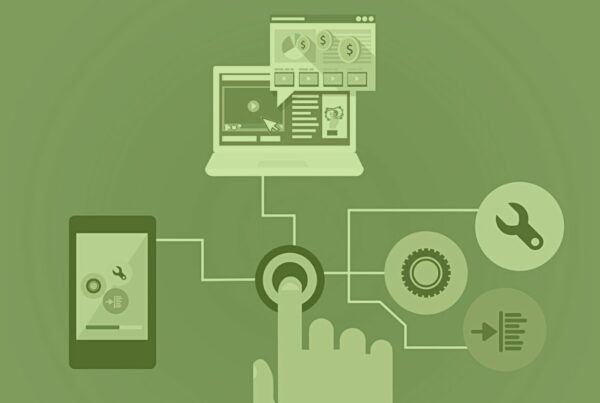The topic of 5G and events is something we’ve tackled before. You might recall us mentioning it in our 2020 event tech trends #EventIcons. Or better yet, you remember when Will Curran and Brandt Krueger dedicated an entire episode of the Event Tech Podcast to it. And as our resident tech-savvy, innovation-loving experts, these two have plenty to say on the subject of 5G and events. So the two were invited to speak at PCMA Convening Leaders 2020 – and what a session it was!
Titled “This is your event. This is your event on 5G”, Will and Brandt’s presentation was the perfect explanation of 5G. And most importantly how it will affect the industry and revolutionize future events. Packed full of relevant teaching moments, fun little skits, and bucketloads of charisma, this was a session to remember. And now, just in case you missed it or need a recap, we bring it back to you. Check out the video and read the highlights of this incredible presentation!
Remember 4G?
So at this point, we’re all pretty much aware of the excitement surrounding 5G. As Will put it, “there’s a hype machine coming on through right now, that it’s got 5G fever. I mean, Lenovo launched a new laptop with 5G. Check out Linksy’s new router. It has built-in 5G”. And Brandt adds that “Samsung just released that they’ve sold 6 million phones with 5G already built-in. So yeah, it’s just 5G, 5G, 5G, 5G. You’re feeling a little inundated with 5G”.
But this does sound somewhat familiar…remember 4G? “Does anybody remember that AT&T came out with a 4GE? There would be a little icon that said 4GE”, Brandt recalls. “It was supposed to mean 4GE evolution. That was the thing in between, 3G and 4G. Well now, AT&T once again is starting to put 5G up in the little display, and it’s not actually 5G. Again, it’s on the road to 5G. It’s like the same game all over again. Now, how many people feel like 4G is 100% rolled out at this point? It’s 10 years later”.
5G And Events: It’s Complicated
Explaining 5G isn’t exactly an easy task. But we have Will Curran on the job to lay down all the wisdom! “So, back when cell phones first started, they were basically 1G”, he explains. “You had these blistering slow speeds. It was all analog. There’s a difference between analog and digital. It’s all ones and zeros, right?”.
“Well, then, there was 2G, which is like when we started to get the ability to get internet on our phones”, he adds. “It was getting a little bit better, but it’s still really, really, really slow. It was all digital at that point. Then 3G came. Everyone remembers the iPhone 3G. It was so exciting. I remember that. I could stream music to my phone. It was mind-blowing. Then 4G came. Oh my gosh, this is so much faster! I can look at a video on my phone now”.
The Meaning Of 5G
“If you need to know what 5G is, the simple two-word definition of it is it just means it’s the fifth generation of these upgrades that have been happening”, says Will. “It doesn’t mean that necessarily. It’s anything remarkably insane with new technology. But it’s just an evolutionary upgrade. Eventually, we’re going to get 6G. It’s just going to be another one of these upgrades. I think that’s important to know because this will keep happening. 6G is going to come in, 7G is going to come in”.
“Even if you think about USB, like USB cables. It went from those big square cables, and then it went to the next level”, adds Brandt. “Then it went to those micro cables. Now, we’re at USBC. With each generation of those cables, what they’re capable of doing, what those devices are capable of doing, including now charging our phones and high-speed delivery of information and data across from your computers and phones. It’s just the next evolution of that technology”.
Look At All This Speed!
“The most exciting thing when it comes to 5G is the speed upgrade that we’re getting, the bandwidth upgrade that we’re getting. You see these people holding up their phones, and they’re getting two gigabits per second over the air. You’d go to yourself and you’re like, “That’s not even as fast as my home internet. That’s crazy.”
Now it’s time to get a little extra nerdy. “As we start to run through things, you might be wondering what it even means for two gigabits per second to come to your phone. And how much speed do you need for your event? All those questions come up when you start thinking about the internet for your event. What bandwidth do you need?”.
“I think it’s important to realize that while this technology is evolving, we’re still going to come down to how many attendees do you have, where are they going to be, and how much bandwidth that they’re going to use”, adds Brandt. “So, what they’re going to be doing on those devices is going to change as the technology becomes available. Those are still going to be the big questions. How many people, where are they going to be, what kind of speeds are available in those locations, and what are they going to be doing on those devices? So, you’re still going to need this five, 10 years down the road. It’s just going to change how much you get to order along the way”.
 Understanding 5G
Understanding 5G
At the end of the day, 5G is a lot of little things. “The first thing is related to frequency”, explains WIll. “So, everyone knows that there are obviously different types of radio frequencies. An FM radio runs on a different frequency than your 4G phone. So, when it comes to radio frequencies, you have basically everything from the 500 megahertz standpoint, up to the 100 gigahertz standpoint. There’s a big range. But 4G covers 600 megahertz, 700 megahertz, 1.7 gigahertz, 2.1 gigahertz, 0.6 gigahertz, and 2.5 gigahertz. So, you can see it’s a little bit shrink on it”.
“There’s a battle for the air going. 4G and 5G are a big part of that. You can see the way it runs. Right now, radios are way down on the spectrum. Then, it starts to get a little higher, then you get Bluetooth, and you get Wi-Fi coming around. Then you hit five gigahertz Wi-Fi. And then you can see that 5G is working way down the spectrum in the 24 to 86 gigahertz spectrum of radio waves. So, what that means is, as you go down, you’re getting more data. AM radio doesn’t sound as good as the Bluetooth in your pocket. But it also has a downside”.
The Downside
“So, when it comes to the higher frequencies, these 24 gigahertz, they’re fantastic. They bring a lot of data very fast”, Will adds. “But here’s the problem. Do you ever try to take a Bluetooth headset, put it on, and walk across the house to like three rooms down? What happens? It disconnects, right? So, it works and gets a lot of data very fast. But it doesn’t have the ability to pass through walls and all these things like that”.
Carrier Differences
“So, what’s interesting about the radio frequencies is, as there are all these different frequencies, 5G actually has three different spectrums. But the important thing to know is that carriers right now are not all working within the same frequencies. It’s very important to know. Some are working in a little bit lower frequencies. Some were working in the very high frequencies, getting those two gigabits per second. That’s why you’re seeing some people say, “This is fake 5G. This is real 5G.” Well, it’s a little bit more complicated. It’s all 5G”.
“So, just part of this confusion that people are having, part of this marketing blitz, part of the hype machine is the fact that the carriers are rolling this out in different ways”, adds Brandt. “We’ve got those three different spectrums. We’ve got those three different things”.
The Different Parts of 5G
“There are three different phases of frequencies of 5G”, Will explains. “You have the penetrable, the semi-penetrable, and then the line of sight. So, let’s start talking about the line of sight. This is what’s called millimeter wave. That’s the thing that everyone’s getting excited about. This is what Verizon is getting so excited about. But then you put your hand right behind your phone, it stops working. Because this 5G of millimeter-wave, the high line of sight frequencies only works with line of sight. Literally, your hand can block the signal”.
“So then, there’s the next frequency, which is that semi-penetrable mid-wave range. The next mid-band range has a little bit bigger of a range. It can penetrate a little bit easier. It’s a little bit faster or it’s a lot slower than that line of sight, millimeter wave, but it still gets a little bit more range. So, you can see how you’re trading off the range with speed. So, as we start to go through this, I really think that this sub-six band in the middle is going to have the biggest impact. We’re not going to see two gigabits per second. But we might see 100 megabits per second or 200 megabits per second when it comes to these speeds”.
“Then there’s the last one, which is penetrable”, he adds. “It’s very low frequencies. Everything below two gigahertz. This is actually more like 4G. It actually uses the same frequencies as 4G is. What’s interesting is, 5G is not just about speeds in these different frequencies. It’s way more than that. That’s what you’re going to sometimes see, this conjunction also working well together”.
5G And Events: So. Many. Antennas.
“So, a traditional 4G tower only has usually about four antennas”, says Will. “What that means is if you stick a lot of people in a small space, they’re all sharing and trying to share data and try to access those antennas. There are only four of them. So, that’s why whenever you go, how many people have been to a concert, a sporting event, a festival, and all of a sudden, your phone says it’s got 4G, but it sucks, right? That’s because everyone’s trying to share four antennas”.
“Well, in this next evolution, 5G, the fifth generation, they said, no, let’s not go to eight antennas. Let’s not go to 10 antennas. 5G is going to be capable of doing from 64 antennas to 256 antennas”, he adds. “So, that means attendees don’t have to share four antennas and try to use all the resources it has. But they have access to way more antennas. So what we should see is a huge decrease in those connectivity issues. There are just so many antennas”.
“So, by being able to do this, it’s like you get an antenna, and you get an antenna, and you get an antenna, where everybody gets an antenna”, says Brandt. “By having just a single one of these cells nearby, you’re going to be able to just keep everything flowing. It’s just going to flow so much better so that I don’t have to wait for… “You want data because I was going to get some data.”
 5G And Events: The Impact
5G And Events: The Impact
It’s time to talk about 5G and events in specific. “So, those antennas I was all excited for, it means we’re going to get more people in less space”, says Will. “It means that we can condense people in areas, and we can have big sporting events with really fast speeds. They all get their own antenna, kind of like what we talked about. That’s going to be, honestly, I think this is the biggest benefit we’re going to see. We’re going to get a lot more people condensed in a lot less space. Those antennas are going to be awesome”.
And it also impacts transportation, with self-driving vehicles. “It’s going to start impacting our industry. I think, honestly, the bigger the vehicle and the shorter the route is where these things are going to start coming in”, says Brandt. “So, we start talking about buses, motor coaches. Especially, if you’re just skewing a shuttle from here to there and there to here, and here to there and there to here in a relatively closed environment. They’re already doing that right now in airports where you’re able to have in a nice closed environment, where you’re not having kids running out on the street and stuff like that. They’re able to already do, basically, motor coaches full of people, fully autonomous. So, this is coming”.
Video Quality
Another awesome consequence when it comes to 5G and events is the video quality. “I think that’s going to see a huge advancement that people are going to be able to get a higher quality video to their phones, to their devices. So now, we’re going to have a higher quality video”, says Will. “People are going to be cool with just as the cell phone in the back of the room for your live stream. You’re going to have to have high broadcast cameras because everyone’s going to want to watch, and it’s all going to be on their mobile devices rather than on their desktops or their TVs”.
“It also means that we’re probably going to see even nicer cameras on phones, too. So, you’re going to see an even higher quality video. So, if someone wants to live stream your event in all glorious detail, they might almost have a camera as good as that in the back of the room”.
“Well, and all of the things that we’ve already talked about are going to impact this. So, the higher speed data transfer”, adds Brandr. “Being able to get that live stream, or even just transferring video. So, imagine, you’ve got it recorded. Media sites got to upload it, they got to trim the eds, all of this stuff before it comes out. And turns around and gets on your website. Being able to do that faster, it’s going to have a big impact of 10 minutes after your event, you’ve got a full high-quality edited version up on your website, ready to go”.
AR & VR
Augmented reality and virtual reality also make their way into the conversation. “Everyone’s excited about AR and VR. Well, it takes a lot of data. It’s a very high bandwidth. So, imagine the ability that you don’t need a huge expensive computer to do a virtual reality experience or augmented reality experience. Instead, it can stream live to a computer that’s offsite because there is so much bandwidth and lower latency as well. So, it’s going to be really exciting”, says Will.
“If you’ve got a holographic speaker, making that as fast as possible so that that person can be in another location and seeing that room virtually live as well”, adds Brandt. “So, they’re able to interact in real-time. So, if we were on stage together, and he was a hologram and I was in person, being able to talk to each other as if we’re in the same room. That’s going to happen with that low latency and high speed”.
What About WiFi?
With all this talk about 5G and events, it’s only natural that we wonder about the potential replacement of WiFi. “One thing to keep in mind is that 5G is going to take a long time to roll out”, says Will. “It’s really expensive. For me to plug in a router and to create WiFi for you guys, I can do it for like $50. With a little cheap router, plug in the Ethernet part, boom, you’re good to go”.
“Also, I think, WiFi is just going to continue to get faster. We’ve seen so much advancement just in the last year when it comes to WiFi. We tease WiFi 6 is the new standard of WiFi. That’s going to make a bigger impact for sure”, he adds.
Learning How To Handle 5G And Events
“As you start to think about how to handle 5G and events, right now, the biggest thing is to know that it’s not one thing. It’s multiple things”, says Brandt. “So, you’re going to have to start asking some questions. If you are being pitched by a city or a venue and they say, “We’ve got 5Gs, so you should come and visit us,” you’re going to have to say, “Okay, slow your roll. What flavor is it? How fast is it? Is this the kind that I can’t get through my hand?” You have to know your attendees. It’s all the same stuff that we’ve been talking about for years. Know your attendees, how techie are they? Are they likely to have the latest and greatest Samsung folding phone that has 5G? Does that have 5G in?”.
5G and Events: Designing Events With Connectivity In Mind
“Will and I have also been talking a lot lately about designing your event with connectivity in mind. So, what can we do not just as far as WiFi, not just WiFi, but also things like power outlets? How do we keep our attendees connected because more and more we’re going to have to start thinking about these sorts of things?”, says Brandt. “So, when we look ahead to 5G and how do we plan our rollouts? Well, we have to start thinking about that from the beginning much earlier on in the process. Not just walking in and going, “I got bars. Sweet. We don’t need WiFi.” It’s going to be a lot more than that”.
“This isn’t going away. Like we talked about in the venues, with all of the amazing things that are coming with 5G, this isn’t going away anytime soon”, he adds. “We’re still going to have to negotiate Wi-Fi with our venues. We’re still going to have to sound like educated consumers when we’re doing that. So, the more that you can educate yourself about how this stuff works, and I know it’s tough, and I know it’s nerdy, but anybody can do it”.
Conclusions
That was quite the session! So, do you now feel a hundred times more enlightened on the topic of 5G and events? What was your favorite part of the entire presentation? If you feel like you need more Will Curran and Brandt Krueger in your life, then make sure you subscribe to the Event Tech Podcast and to #EventIcons to learn even more about technology, the world of events, and so much more. Thank you for joining us!










